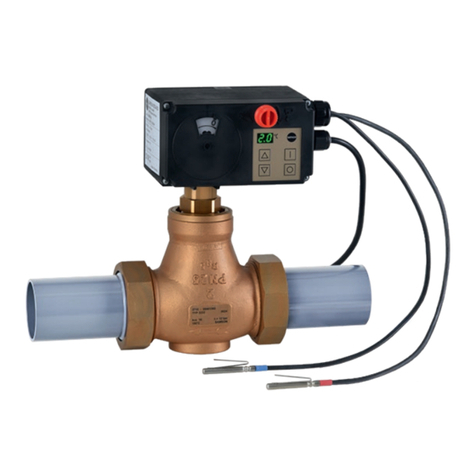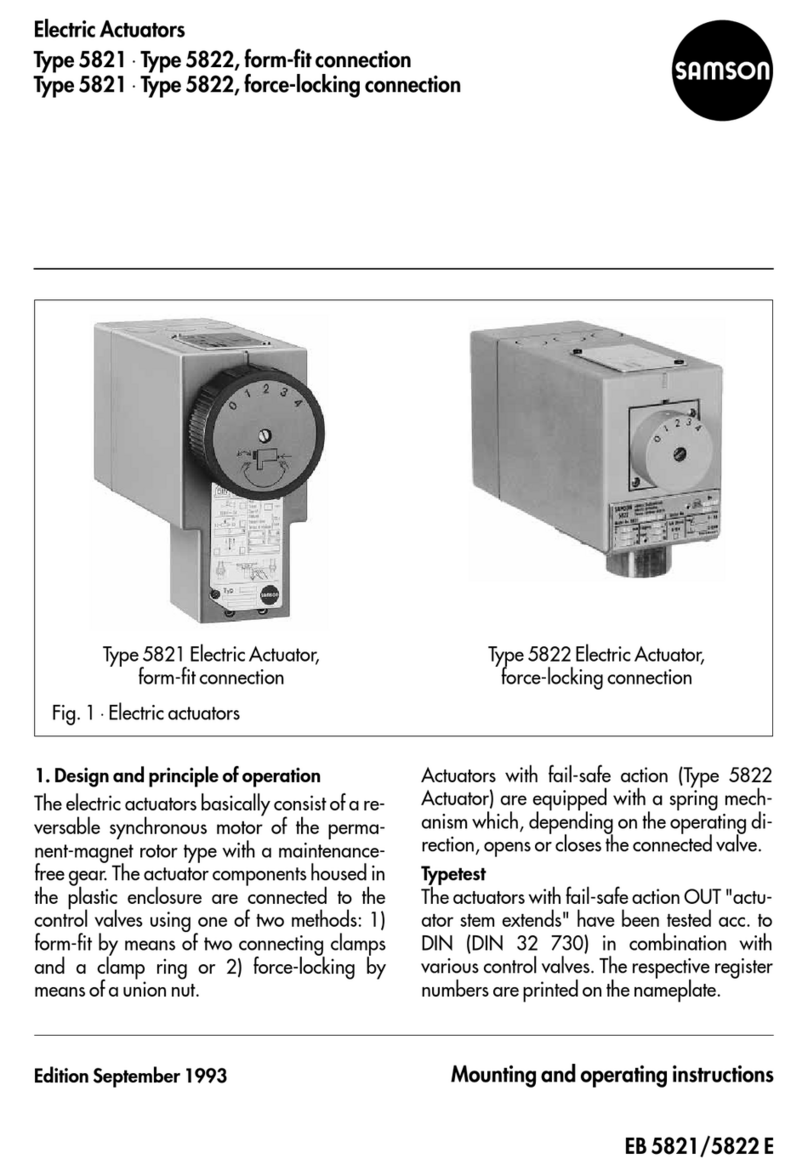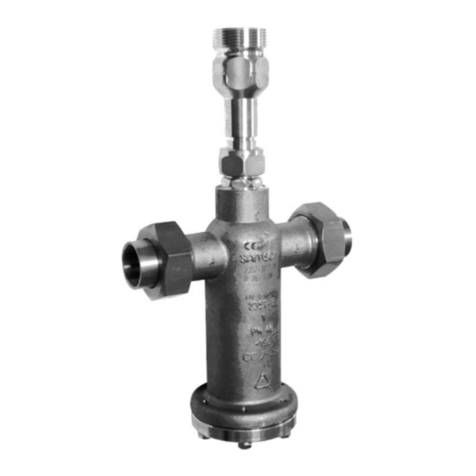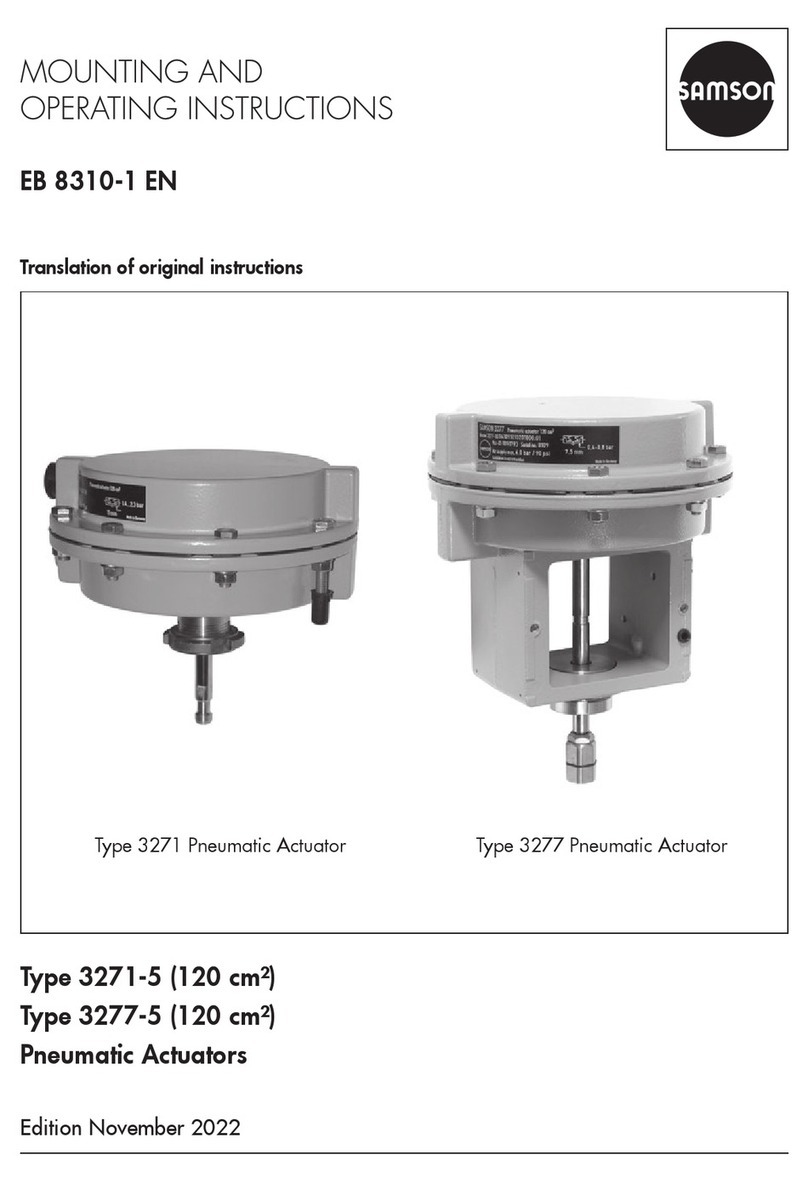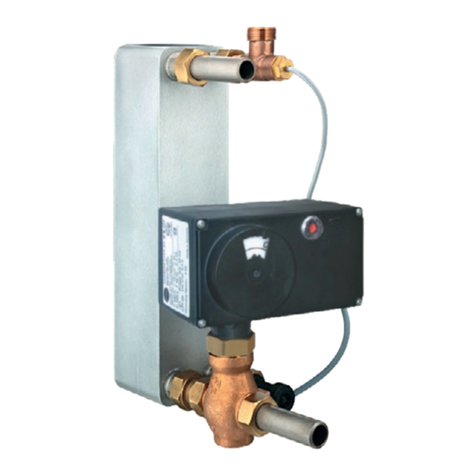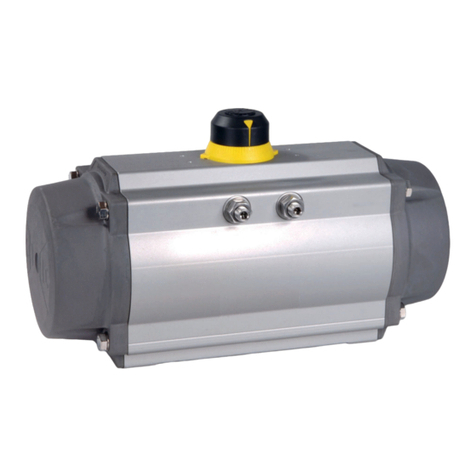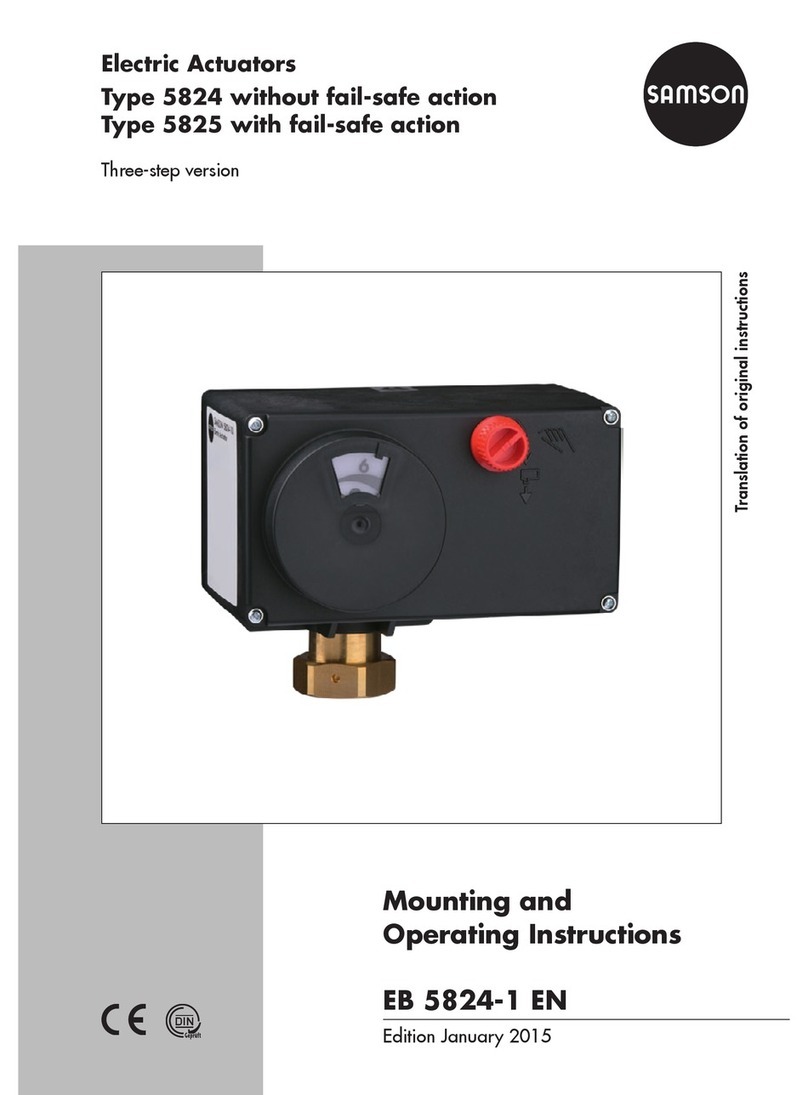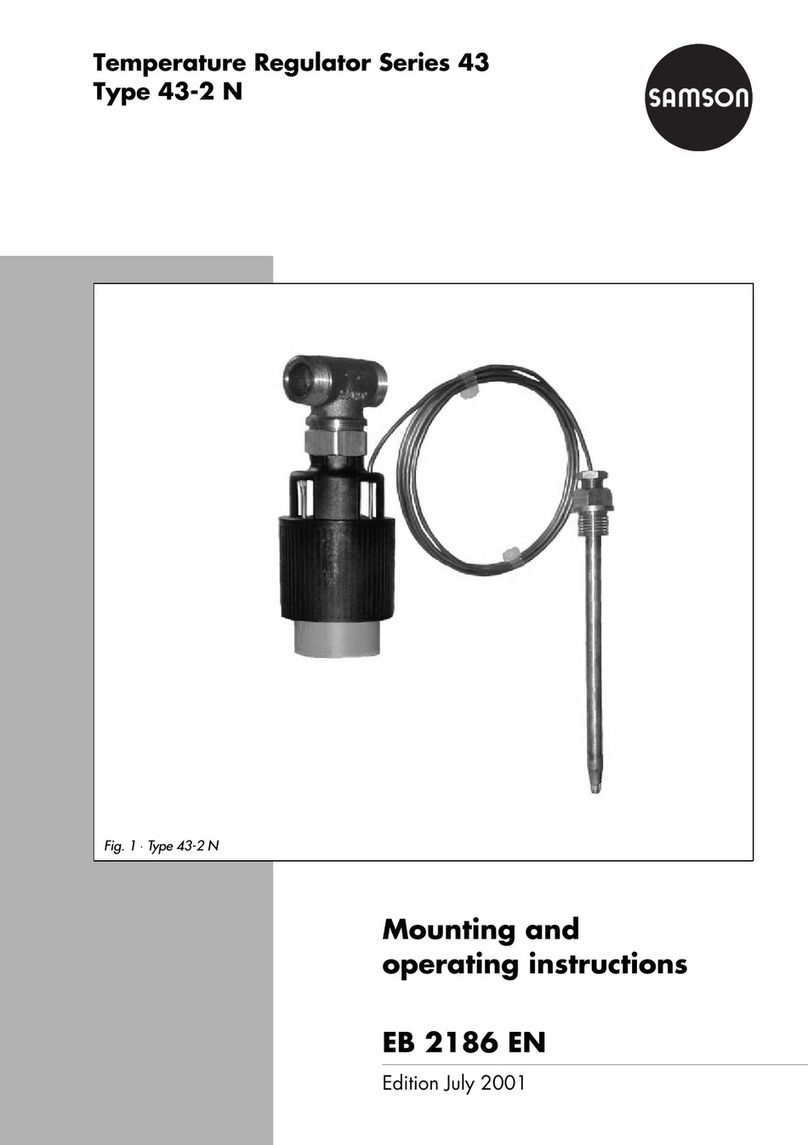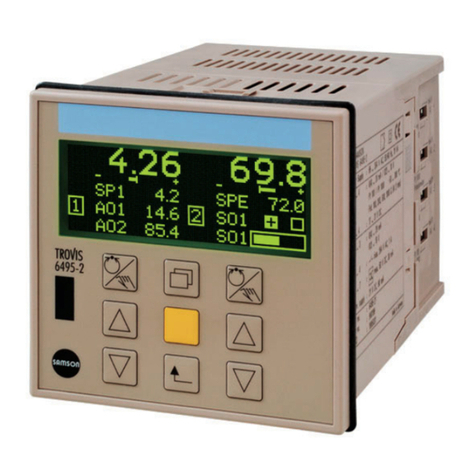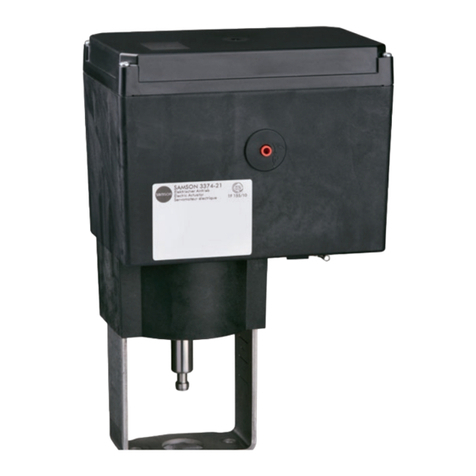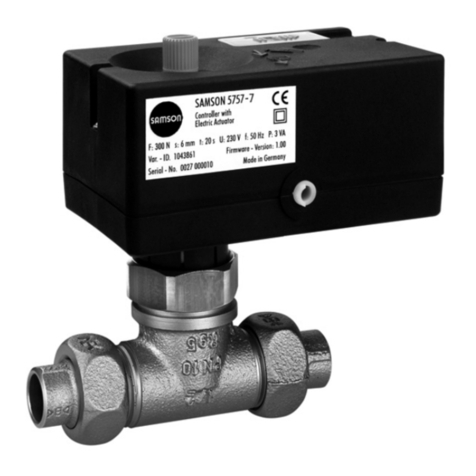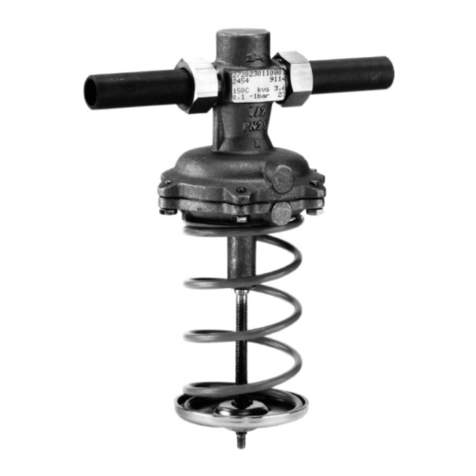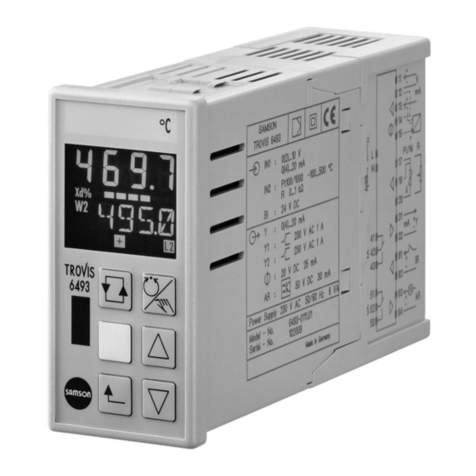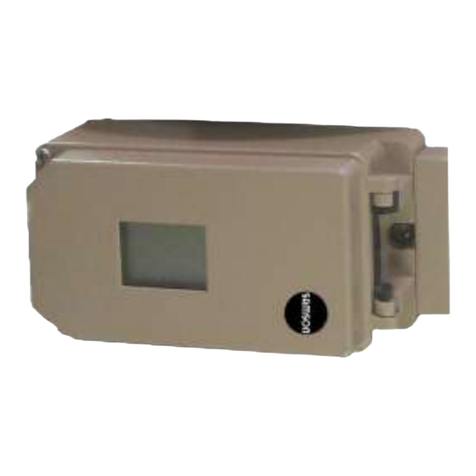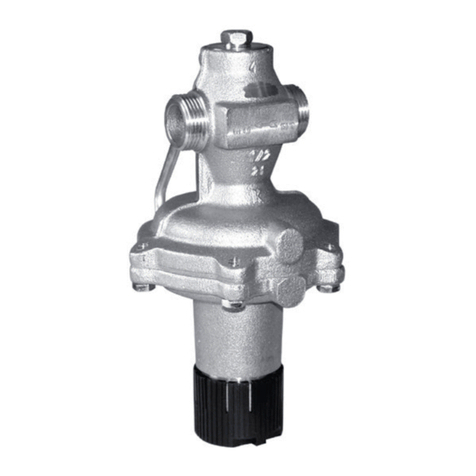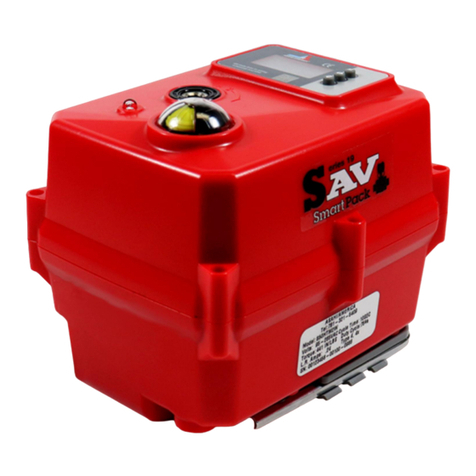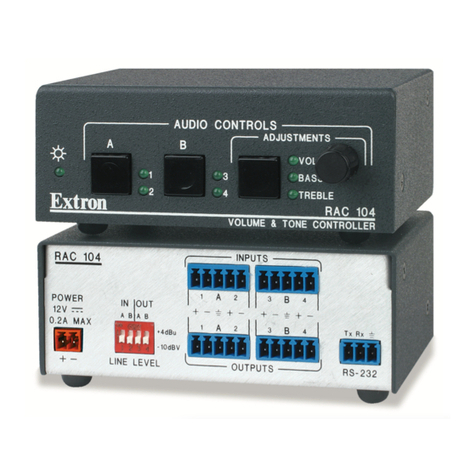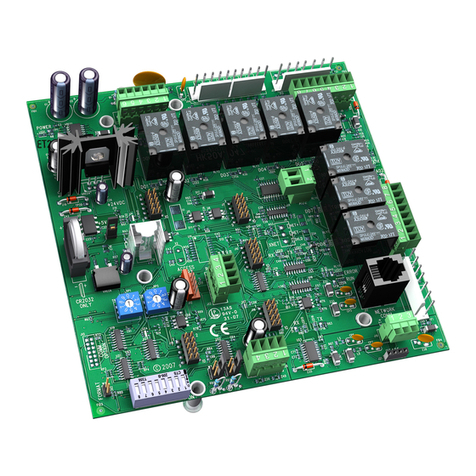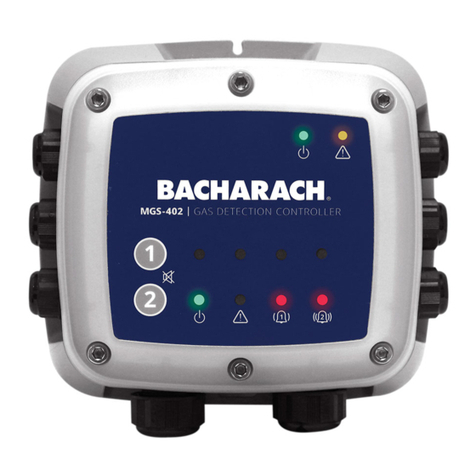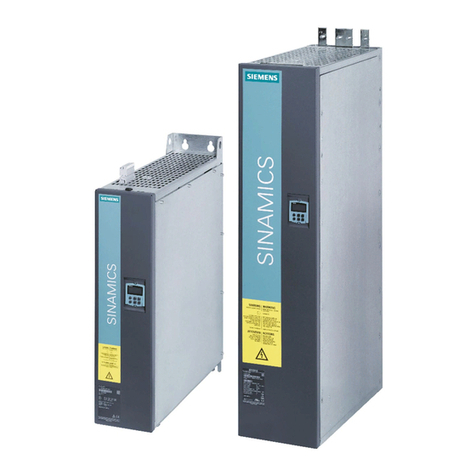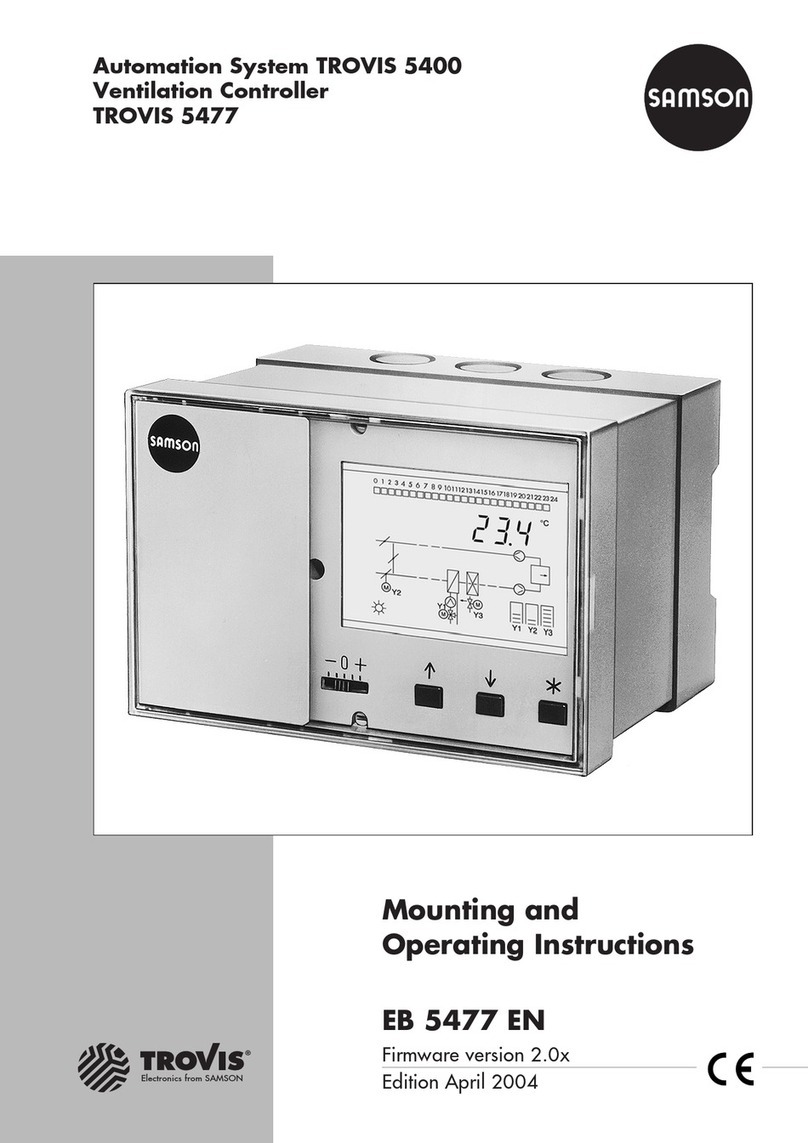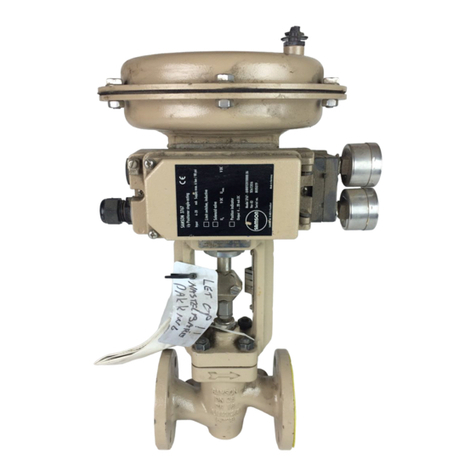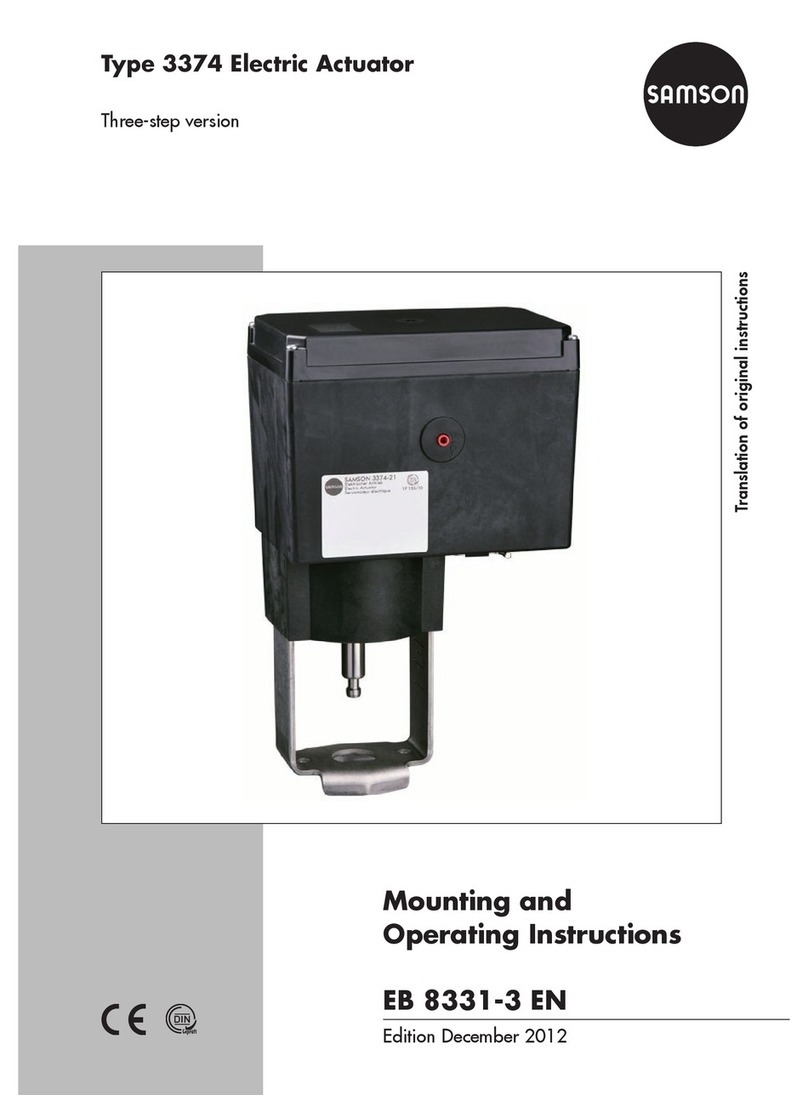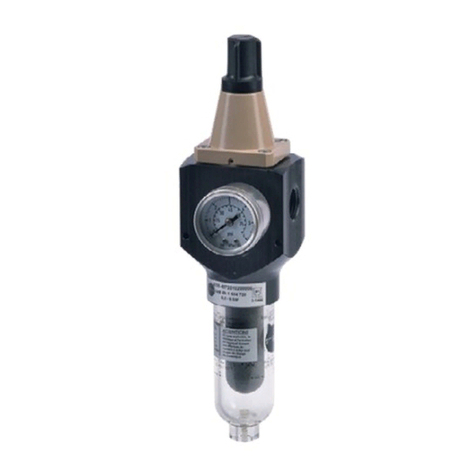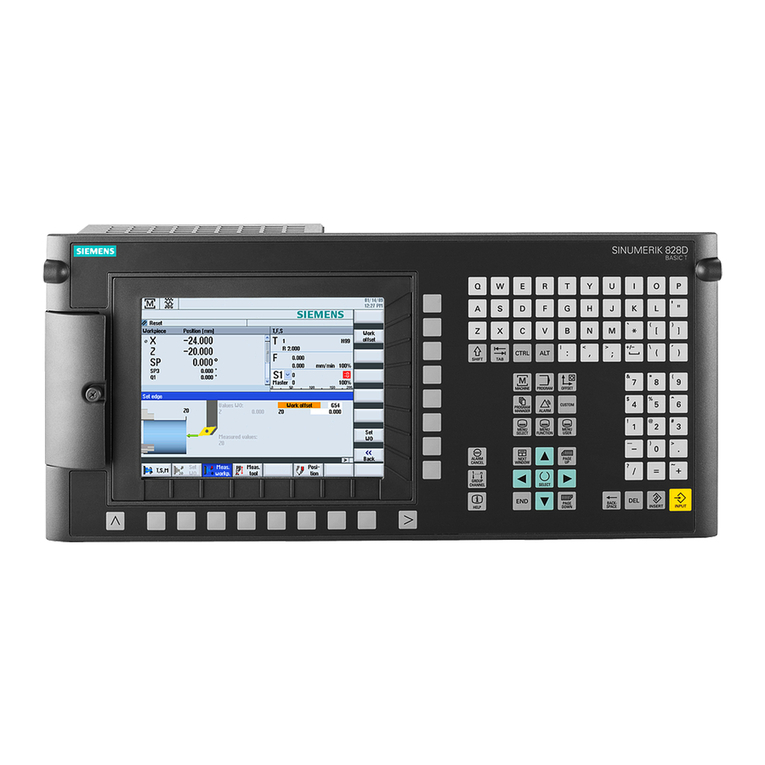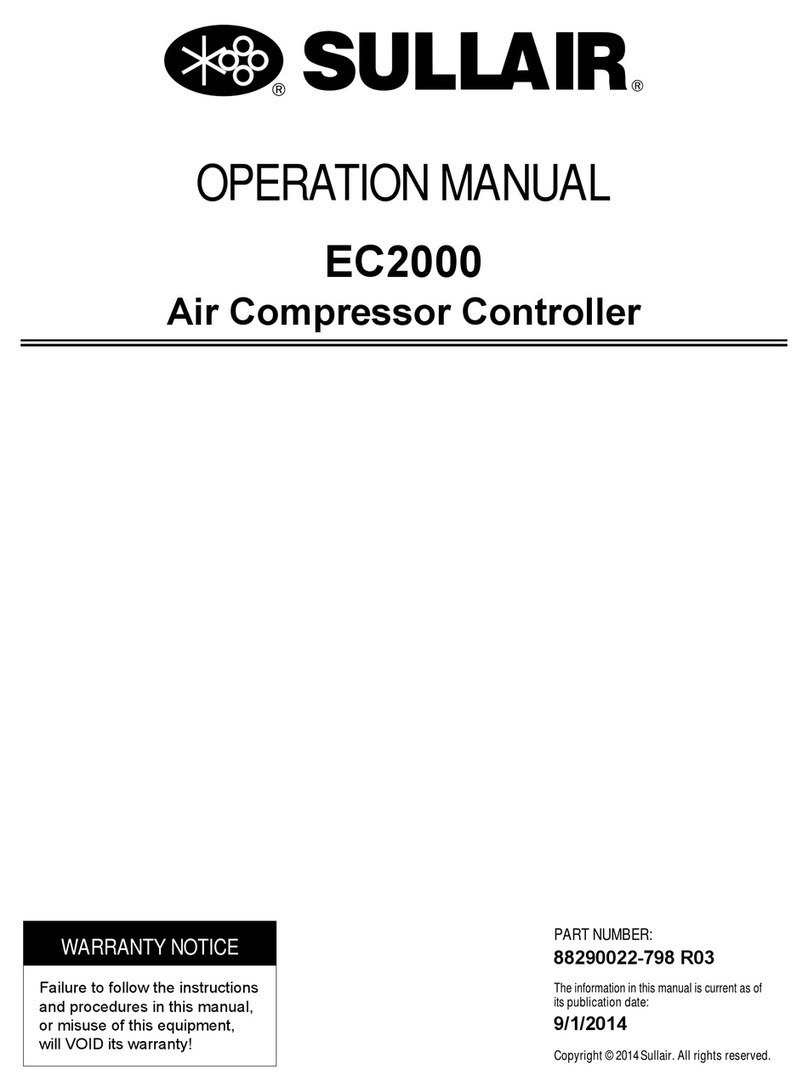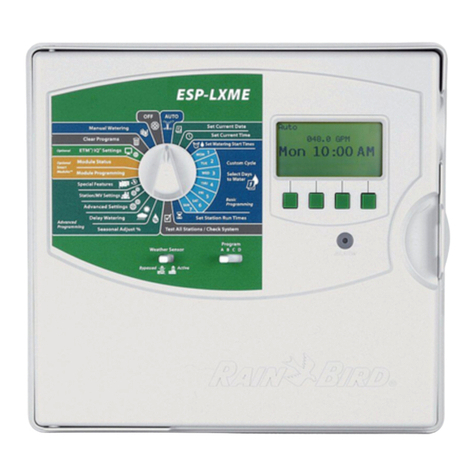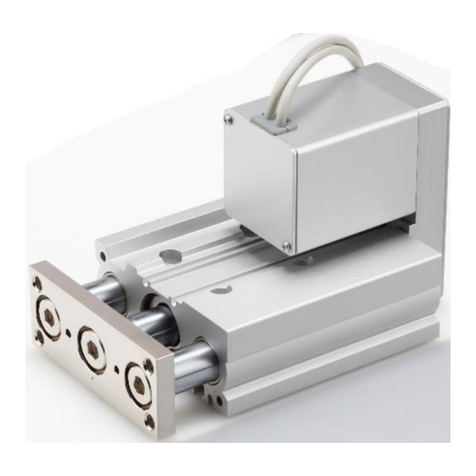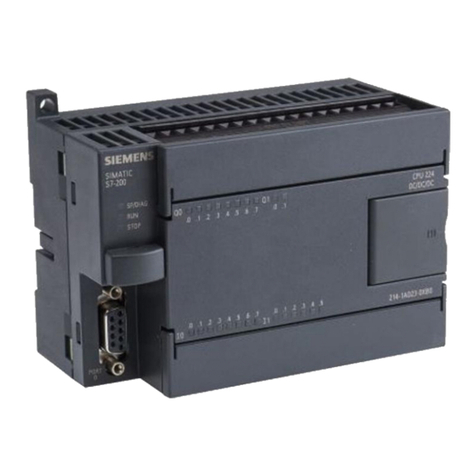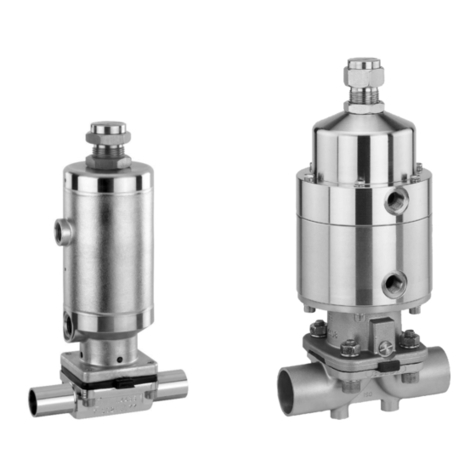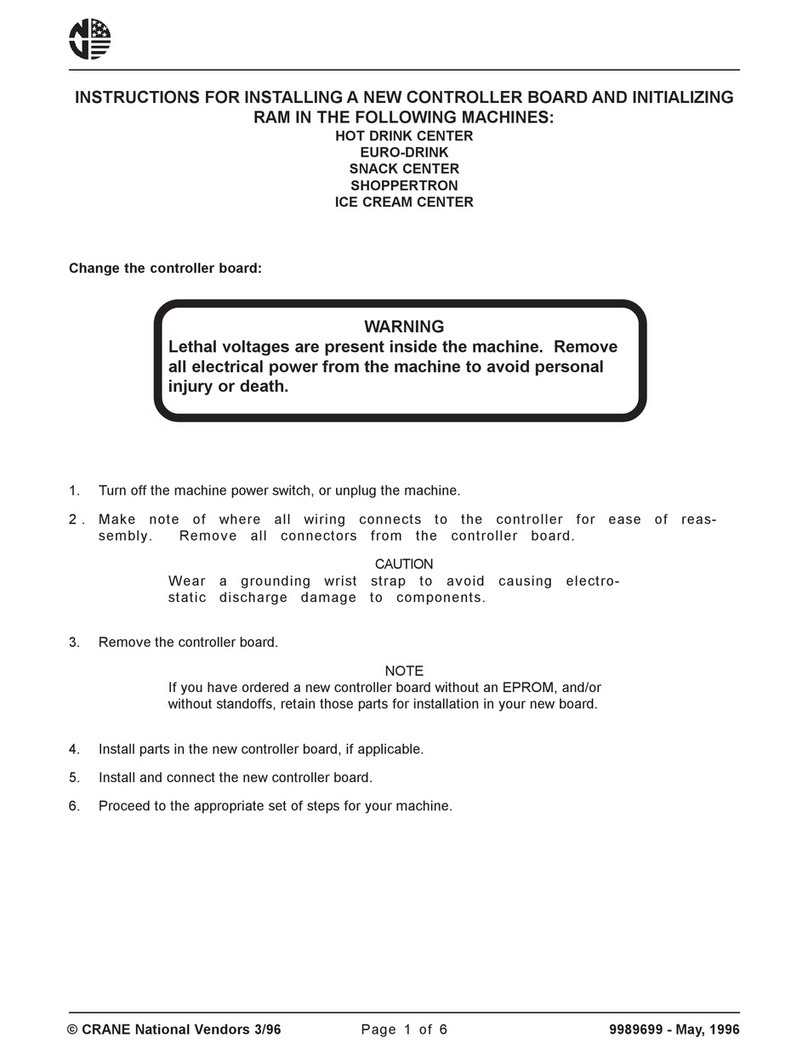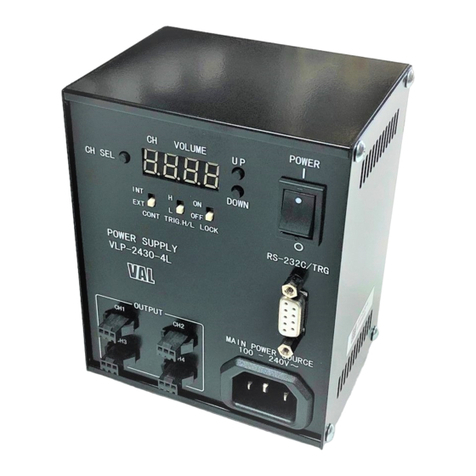
EB 3013 EN 3-1
Design and principle of operation
3 Design and principle of oper-
ation
ÎSeeFig.3-1andFig.3-2
Thedifferentialpressureregulatorswithow
limitation are designed to maintain the differ-
ential pressure between the high-pressure
andlow-pressurelinestoadenedsetpoint.
Theowratecanbelimitedbytherestriction
integrated in the valve body.
Type42-34·Thesetpointcanbeadjusted
as required within the set point range.
Type42-38·Thesetpointisxed.
The regulators basically consist of the
Type2423Valvewithseat(2),plug(3)and
restriction (1.4) as well as a closing actuator
(Type2424orType2428)withanoperating
diaphragm (13).
Valve and actuator are delivered separately
and must be assembled on site using a cou-
pling nut (11).
Themediumowsthroughthevalveinthe
direction indicated by the arrow. The areas
released by the restriction (1.4) and the
valveplug(3)determinetheowrateand
thedifferentialpressure∆pplant across the
plant. See 'Pressure conditions in the plant
and at the regulator' in the 'Operation' sec-
tion.
In fully balanced valves, the forces acting on
the valve plug created by the upstream and
downstream pressures are balanced by a
balancing bellows (5) or balancing dia-
phragm (5.1). Regulators balanced by a bel-
lows or a diaphragm only differ in the pres-
sure balancing principle applied. Valves bal-
ancedbyadiaphragm(DN65to250only)
have a balancing diaphragm (5.1) instead
of the balancing bellows (5). The down-
stream pressure p2acts on the bottom of the
diaphragm and the upstream pressure p1on
the top of the diaphragm. As a result, the
forces created by the upstream and down-
stream pressures acting on the plug are bal-
anced out.
TheregulatorsinDN15to100aretted
with a connecting piece (10) for the
low-pressure control line between the valve
and actuator.
To control the differential pressure, the high
pressure(ow)oftheplantistransmitted
over the high-pressure control line to the bot-
tom diaphragm chamber of the actuator. The
pressure downstream of the restriction (1.4)
is transmitted through the hollow plug stem
and the attached low-pressure control line to
the top diaphragm chamber of the actuator.
The differential pressure is converted into a
set point force at the operating diaphragm
(13) and used to move the plug according to
the force of the set point springs (16). De-
pending on the actuator version, the set
point springs installed in the actuator
(Type42-38)denethesetpointorthe
springs are mounted externally to allow the
setpointtobeadjusted(Type42-34).
Theowsetpointscrew(1.1)withthead-
justed restriction (1.4) is used to change the
cross-sectionalareaofowtoadjustthe
maximumowrate.
The force limiter (20) and internal excess
pressure limiter (21) protect the seat and
plug from overload during exceptional oper-
ating conditions.




















